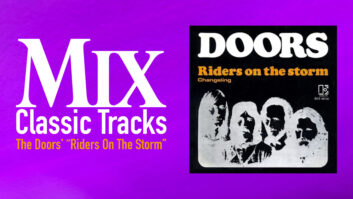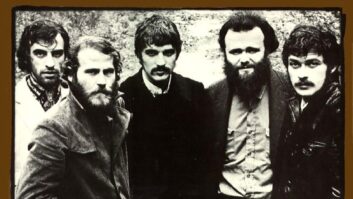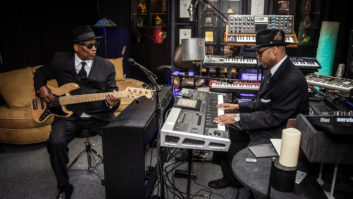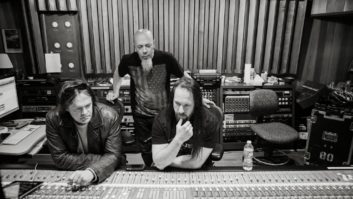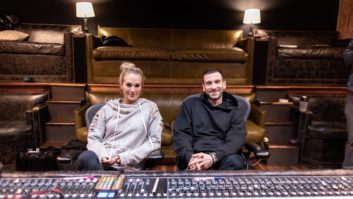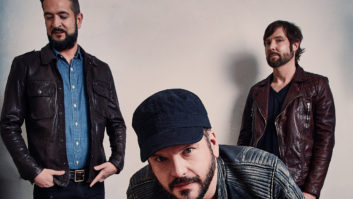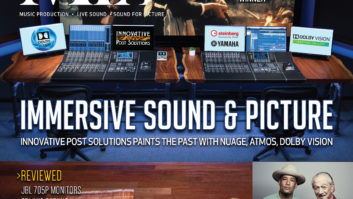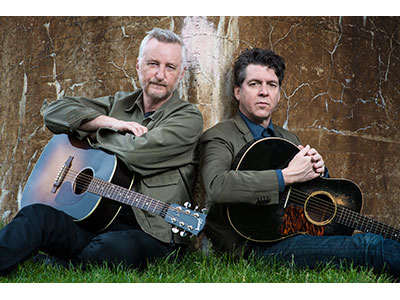
Taking a train trip feels like going back in time, to an era when travelers had the luxury of taking days, not hours, to journey from the heartland to the Wild West. The romance of train travel, and reverence for the music inspired by those rolling engines, inspired Billy Bragg’s conception of the new album Shine a Light: Field Recordings from the Great American Railroad.
The ever-authentic Bragg broached this idea to artist/producer Joe Henry: The two of them would ride the rails together, playing train songs along the way—in railroad cars and stations, and on platforms.
“The concept came from Billy, and it would have just about had to be envisioned by a foreigner—someone with the aerial view of our country’s evolution, and the way that the mythology of the railroad has so informed our culture,” says Henry. “The concept was in no way driven by nostalgia—for trains, or a disappeared America—but by a desire to see anew the authority and viability of something that has become invisible to most of us.
“We chose the route—Chicago to Los Angeles, by way of San Antonio—because it is the longest single journey offered by Amtrak, and because the route itself is fundamental to our national character and development,” Henry explains further. “The line from Chicago to San Antonio, called The Texas Eagle, traces the migration from the Deep South into the industrial Midwest. From Texas, we picked up The Sunset Limited, which originates in New Orleans, heading west to Los Angeles and the Pacific Ocean, which evidences the hard migration west from the dust-bitten scrub of the Depression.
“Those two seminal journeys alone represent the evolution of so much American folk music, and how it was tempered and transfigured by a collision of cultures. And we picked songs we believe reflect that intersection, as well—the deep longings we all experience to move our lives forward.”
The baker’s dozen songs Bragg and Henry chose will be familiar to many: “The Rock Island Line,” “The Midnight Special,” “In the Pines” and “Gentle on My Mind,” to name a few. But not many listeners will have heard these well-loved folk songs performed in Chicago’s Union Station, for example, accompanied by low whistles and announced arrivals.
Tasked with managing the technical practicalities of this original notion was Grammy-winning engineer Ryan Freeland, who has worked on numerous Henry projects, including Bragg’s 2013 studio album Tooth and Nail.
“Ryan is a musician first, and thus is a musical problem solver,” Henry observes. “He never lets the technical eclipse the romance of music in articulation. I knew we needed a recording that lived both as a vivid document of a moment, but would also be robust and beautiful enough to work purely as music—even without the backstory providing context. And Ryan knows how to hold those sometimes-conflicting desires.”
For planning purposes, Bragg sent Freeland an itinerary, complete with photos of some of the historic train stations, and guesstimates of the time windows they would have for recording:

Photo: Mark Lindsay.
MONDAY
We’ll do our first recording before we board the train, in the Grand Hall of the Union Station in Chicago. The acoustics are good there and a number of stair wells offer us different recording environments.
Once we’re on the train, our first opportunity to jump off and record will be at St Louis, on Monday evening at 7.21pm, where, as you will see from the schedule, we should have 40 minutes to do get things done.
The pace of the trip west would be leisurely in a way, but the recording process would be anything but. Freeland knew that setup and teardown would sometimes be like a race against time, and he could only take what he could carry, much the way a field recordist works.
“This wasn’t exactly field recording, though,” Freeland says. “It was more like a combination field recording/record. That combination really appealed to me. I got to use all of the studio-world thoughts I have, plus all this interesting live-location recording [knowledge].”
“The idea I had was to get as much of the noise as possible: the sounds of train stations full of hustle and bustle, people and luggage carts, and announcements over the P.A. I came up with this plan that was mostly mobile but still needed quite a bit of setup.”
Freeland packed two Pelican cases with four AEA Nuvo ribbon mics—two N8s and two N22s—plus two Apogee Duet interfaces, a backup battery system, and a custom, collapsible Latch Lake mic stand that the manufacturer designed specially for this project. He explains the considerations behind his selections:
“The Duet runs on batteries, which I needed, and I matrixed two of them to get four channels, running off my laptop. The Nuvos had windscreens, and there were a couple of songs where the wind was tough to deal with. And that mic stand was one of the most useful things; it collapsed small enough to get into a carry-on, but it’s sturdy and extends to seven feet tall.
“I could get everything into those cases in about a minute-and-a-half,” Freeland continues. “And I knew I could get it set up in a minute-and-a-half. But it turns out that a minute-and-a-half is an eternity when the guy is about to call, ‘All aboard!’
“But oddly enough, I would say I did things about the same as I would in a studio where you listen during take one and then make adjustments. The question always becomes, should I move my microphones or ask the musicians to do something a little differently, and usually I default to moving the mics.
“But in a case like the station in San Antonio where we recorded, for example, we really wanted to get the sound of this beautiful, reverberant hall, so I kept asking Joe and Billy to move farther back from the mics so that the mics would pick up more of the room, and their voices slapping around the room.”
Other challenges that Freeland and the musicians met: uncooperative security officers, USB power issues, and unannounced schedule changes—all part of the extremely evocative adventure set forth in Bragg’s itinerary.

A map of the journey.
TUESDAY
Our next recording spot will probably be Dallas at 11.30am where the train is scheduled to stop for 20 minutes. There is a nice mural depicting John Henry at the station.
Next stop will be Fort Worth at 1.25pm where the train is scheduled to stop for 45 minutes.
We will then get off the train at 6.30pm in Austin and record at the station once the train has left. SXSW is on, so there may be some other stuff to do in Austin. We’ll then hook up with our driver, Alex Penrose, and drive 80 miles to San Antonio. We’re staying in the Gunter Hotel, where, in 1936, Robert Johnson recorded a session for Brunswick Records in room 414.
Freeland says that their visit to the Gunter Hotel is one the memories he treasures most from a weeklong “session” where the terrain was part and parcel of the music.
Henry recalls: “As this train departs El Paso heading west, it runs for miles along the U.S./Mexico border; and you can’t help but muse—as you look to one side of the train at the suburban sprawl of El Paso, and out the other to a Juarez that seems to exist in another century altogether—at the self-created and self-fulfilled divisions between us. For me, this view alone was worth the trip.”
